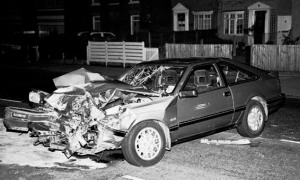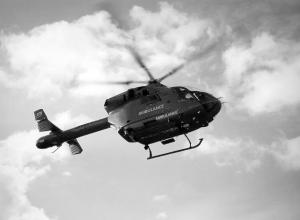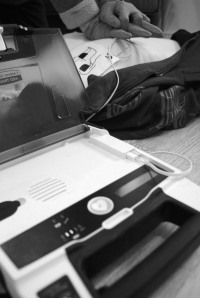Waveform Analysis–Guided Treatment Versus a Standard Shock-First Protocol for the Treatment of Out-of-Hospital Cardiac Arrest Presenting in Ventricular Fibrillation
Circulation. 2013; 128: 995-1002
Ventricular fibrillation (VF) waveform properties have been shown to predict defibrillation success and outcomes among patients treated with immediate defibrillation. We postulated that a waveform analysis algorithm could be used to identify VF unlikely to respond to immediate defibrillation, allowing selective initial treatment with cardiopulmonary resuscitation in an effort to improve overall survival.
Methods and Results In a multicenter, double-blind, randomized study, out-of-hospital cardiac arrest patients in 2 urban emergency medical services systems were treated with automated external defibrillators using either a VF waveform analysis algorithm or the standard shock-first protocol. The VF waveform analysis used a predefined threshold value below which return of spontaneous circulation (ROSC) was unlikely with immediate defibrillation, allowing selective treatment with a 2-minute interval of cardiopulmonary resuscitation before initial defibrillation. The primary end point was survival to hospital discharge. Secondary end points included ROSC, sustained ROSC, and survival to hospital admission. Of 6738 patients enrolled, 987 patients with VF of primary cardiac origin were included in the primary analysis. No immediate or long-term survival benefit was noted for either treatment algorithm (ROSC, 42.5% versus 41.2%, P=0.70; sustained ROSC, 32.4% versus 33.4%, P=0.79; survival to admission, 34.1% versus 36.4%, P=0.46; survival to hospital discharge, 15.6% versus 17.2%, P=0.55, respectively).
Conclusions Use of a waveform analysis algorithm to guide the initial treatment of out-of-hospital cardiac arrest patients presenting in VF did not improve overall survival compared with a standard shock-first protocol. Further study is recommended to examine the role of waveform analysis for the guided management of VF.
http://circ.ahajournals.org/content/128/9/995.abstract.html?etoc









